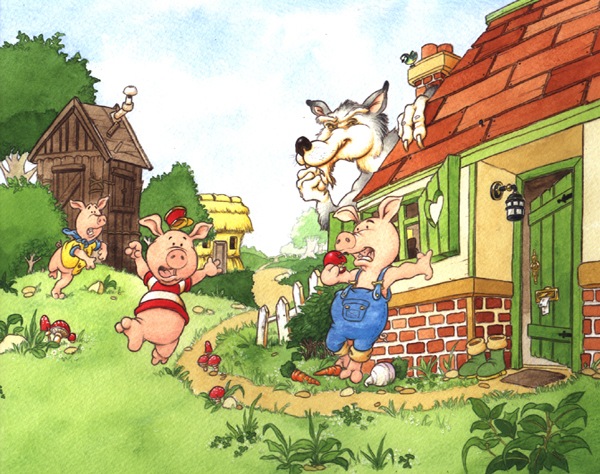|
Characters
|
Building Materials
|
Action
|
Reaction
|
Confidence Level
|
Ability to Create Happy Ending
|
|
1st Pig
|
Straw/ hay
|
Built a house
|
Freaked out when house was blown down
|
Low
|
Extremely low
|
|
2nd Pig
|
Sticks
|
Built a house
|
Freaked out when house was blown down
|
Medium
|
Low
|
|
3rd Pig
|
Bricks
|
Built a house
|
Took in brothers who were not capable of building sturdy house
|
High
|
High
|
|
Wolf
|
N/A
|
Blew pig houses down
|
Freaked out when he could not blow down a house of bricks
|
Very High
|
Low
|
The end.

The truth is, you would never present that table to someone who wanted to know the story of The Three Little Pigs. Even though it has all the components of the story, the information is not connected and does not provide any context about how the actions played out using the materials and the skills of the little pigs. As I presented it to you today, it’s just a group of facts and it does not help paint a picture your brain is willing to buy in to.
The business world is made up of people who grew up hearing stories. From birth, we train our brains to make connections between data and the world around us. We get a satisfied feeling when we understand the data and are able to react to the story it tells. The problem is, data doesn’t tell a story on it’s own. It takes someone to weave it together in a way that creates interest for the listener. The listener needs to understand what is in it for them, what the impact is, and how their reaction can impact the story.
I continue to see this as an area of needed development for many leaders. For years, we’ve been focused on getting our hands on our organizational data, and that is finally happening in a big way. What leaders are not as adept with is interpreting the data and then, telling a meaningful story with that data. In my career, I have spent each day reading email with spreadsheets attached. A majority of those email over the years have not included any story being told by the data. This practice of attaching a spreadsheet and feeling like we’ve done our jobs should end.
So, as you start your day, please stop and think about the way you’re conveying your messages. Are you just sharing facts, or are you adding real value and including your interpretation in the form of a compelling story?

